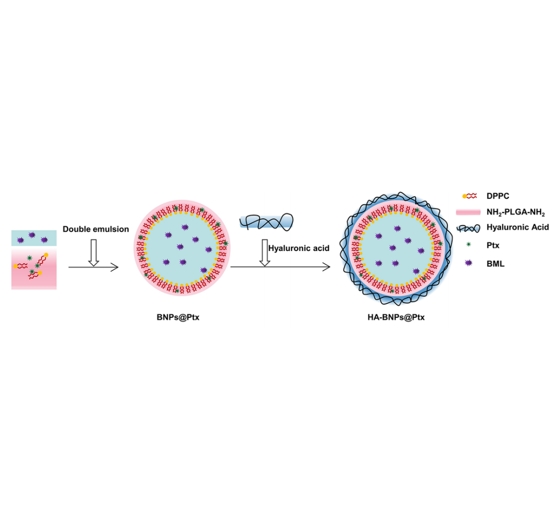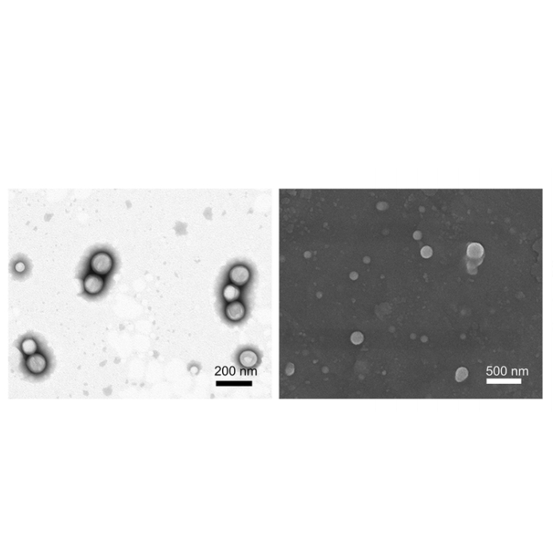文献:Synergistic Cascade Strategy Based on Modifying Tumor Microenvironment for Enhanced Breast Cancer Therapy
文献链接:https://www.frontiersin.org/journals/pharmacology/articles/10.3389/fphar.2021.750847/full
作者:Huan Zhang,Jinshun Xu,Binyang Gao,Hong Wang,Jianbo Huang,Jie Zhou,Rui Yang,Feng Yan,Yulan Peng
相关产品:NH2-PLGA-NH2(氨基-聚乳酸-羟基乙酸共聚物-氨基)
原文摘要:
Background: Triple-negative breast cancer (TNBC) is the most aggressive subtype of breast cancer with very few treatment options. Although tumor-targeted nanomedicines hold great promise for the treatment of TNBC, the tumor microenvironment (TME) continues to be a major cause of failure in nanotherapy and immunotherapy. To overcome this barrier, we designed a new synergistic cascade strategy (SCS) that uses mild hyperthermia and smart drug delivery system (SDDS) to alter TME resistance in order to improve drug delivery and therapeutic effi cacy of TNBC.
Methods: Mild hyperthermia was produced by microwave (MW) irradiation. SDDS were formulated with thermosensitive polymer-lipid nanoparticles (HA-BNPs@Ptx), composed of polymer PLGA, phospholipid DPPC, hyaluronic acid (HA, a differentiation-44 targeted molecule, also known as CD44), 1-butyl-3-methylimidazolium-L-lactate (BML, a MW sensitizer) and paclitaxel (Ptx, chemotherapy drug). 4T1 breast tumor-bearing mice were treated with two-step MW combined with HA-BNPs@Ptx. Tumors in mice were pretreated with 1st MW irradiation prior to nanoparticle injection to modify TME and promote TME and promoting nanoparticle uptake and retention. The 2nd MW irradiation was performed on the tumor 24 h after the injection HA-BNPs@Ptx to produce a synergistic cascade effect through activating BML, thus enhancing hyperthermia effect, and instantly releasing Ptx at the tumor site.
Results: Multifunctional CD44-targeted nanoparticles HA-BNPs@Ptx were successfully prepared and validated in-vitro. After the 1st MW irradiation of tumors in mice, the intratumoral perfusion increased by 2 times and the nanoparticle uptake augmented by 7 times. With the 2nd MW irradiation, remarkable antitumor effects were obtained with the inhibition rate up to 88%. In addition, immunohistochemical analysis showed that SCS therapy could not only promote the tumor cells apoptosis, trigger the immune response of cytotoxic T lymphocytes, but also signifi cantly reduce the lung metastasis.
Conclusions: The SCS using mild hyperthermia combined with smart drug delivery system, can signifi cantly improve the effi cacy of TNBC treatment in mice by modifying TME and hyperthermiamediated EPR effects
NH2- PLGA - NH2是一种双端氨基修饰的聚乳酸 - 羟基乙酸共聚物(PLGA)。PLGA 是由乳酸(LA)和羟基乙酸(GA)两种单体通过缩聚反应形成的无规共聚物。乳酸和羟基乙酸的比例可以不同,这会影响 PLGA 的性质,如降解速度、结晶度等。两端的氨基(NH2)基团是具有化学反应活性的官能团,可以参与多种化学反应,例如与羧酸、醛、异氰酸酯等发生反应。基于NH2- PLGA - NH2的相关性能,多功能cd44靶向纳米颗粒HA-BNPs@Ptx合成如下:

图:合成示意
HA-BNPs@Ptx的合成:
将DPPC、NH2-PLGA-NH2和Ptx完全溶解在二氯甲烷(DCM)中。将BML混合在溶液中。Ptx和BML溶液在超声波振荡仪上以一定的功率乳化。将 PVA溶液进一步加入乳化液中,并进行乳化。然后DCM在通风柜中在磁搅拌下蒸发。最后,收集BNPs@Ptx,离心,用双蒸馏水洗涤。通过PLGA 上的氨基与BNPs@Ptx共价偶联,制备了靶向CD44的纳米颗粒。首先,将 HA溶解在 MES缓冲液中。然后在HA溶液中加入EDC和 NHS。随后,将混合物与 BNPs@Ptx悬浮液在冰浴中连续搅拌。收集HA-BNPs@Ptx,离心净化,用双蒸馏水洗涤。

图:表征图像
结论:
该文献成功制备了基于NH2- PLGA - NH2合成的多功能cd44靶向纳米颗粒HA-BNPs@Ptx。智能给药系统HA-BNPs@Ptx在主动靶向、分子量刺激和tumour细胞Apoptosis 方面表现出较高的效率,此外,两步MW照射与HA-BNPs@Ptx相结合的协同级联效应可有效控制小鼠tumour的进展,并触发免疫记忆反应。

 2025-02-11 作者:ws 来源:
2025-02-11 作者:ws 来源:

